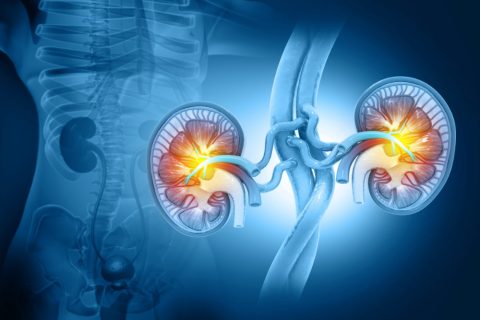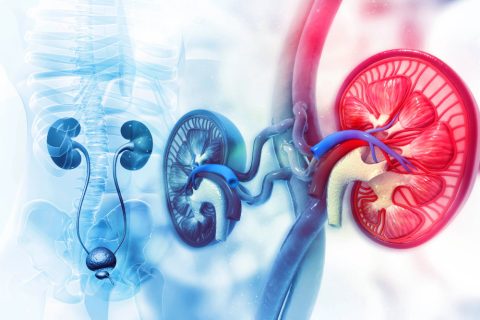ENDOUROLOGY
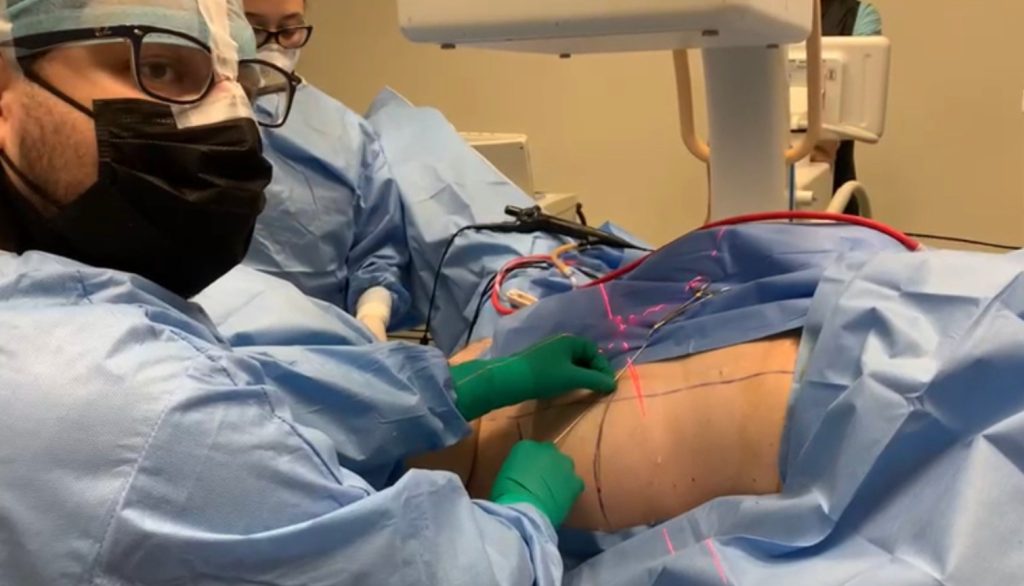
1.- PERCUTANEOUS RENAL SURGERY
“This surgery is indicated for kidney stones of 1-1.5cm or larger, with the aim of curing the patient in a single procedure.
The procedure can be performed with either spinal or general anesthesia, as determined by the anesthesiologist.
It involves working simultaneously through the lower urinary tract and directly in the kidney (Fig. 1.1).”
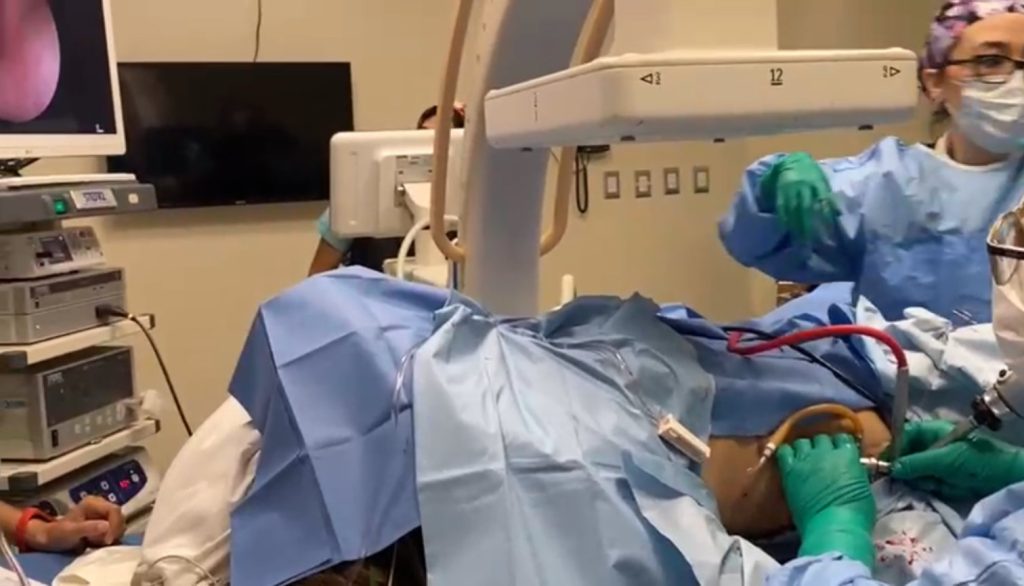
“A needle puncture is performed, guided by X-rays and/or ultrasound, to subsequently introduce the endoscope and laser fiber (Fig. 1.2).
We use the most advanced equipment in the city, with the goal of pulverizing rather than fragmenting the calculus. The benefit of this approach is to turn the calculus into powder and avoid leaving large fragments that could potentially obstruct the urinary tract later on and cause intense pain.”

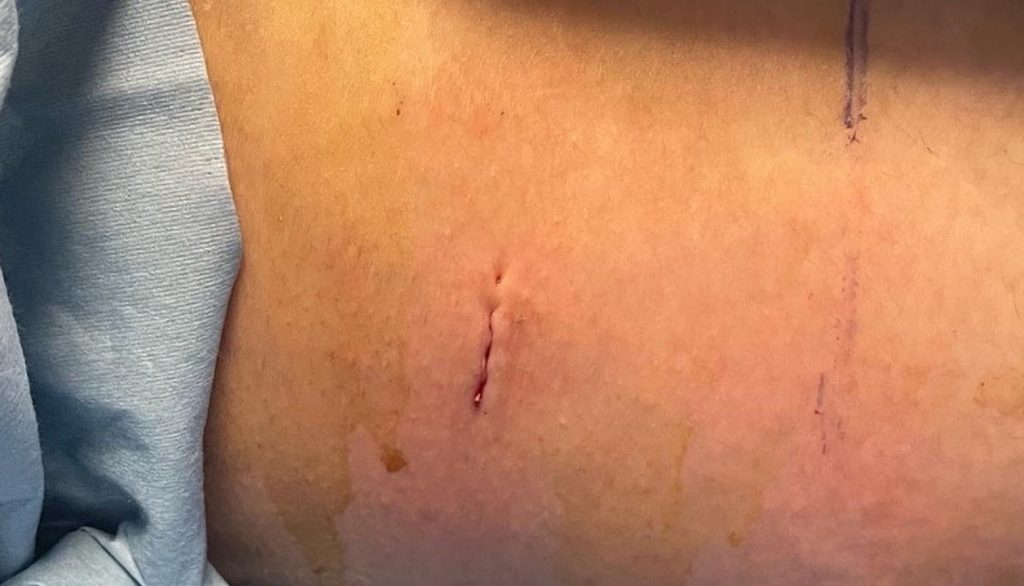
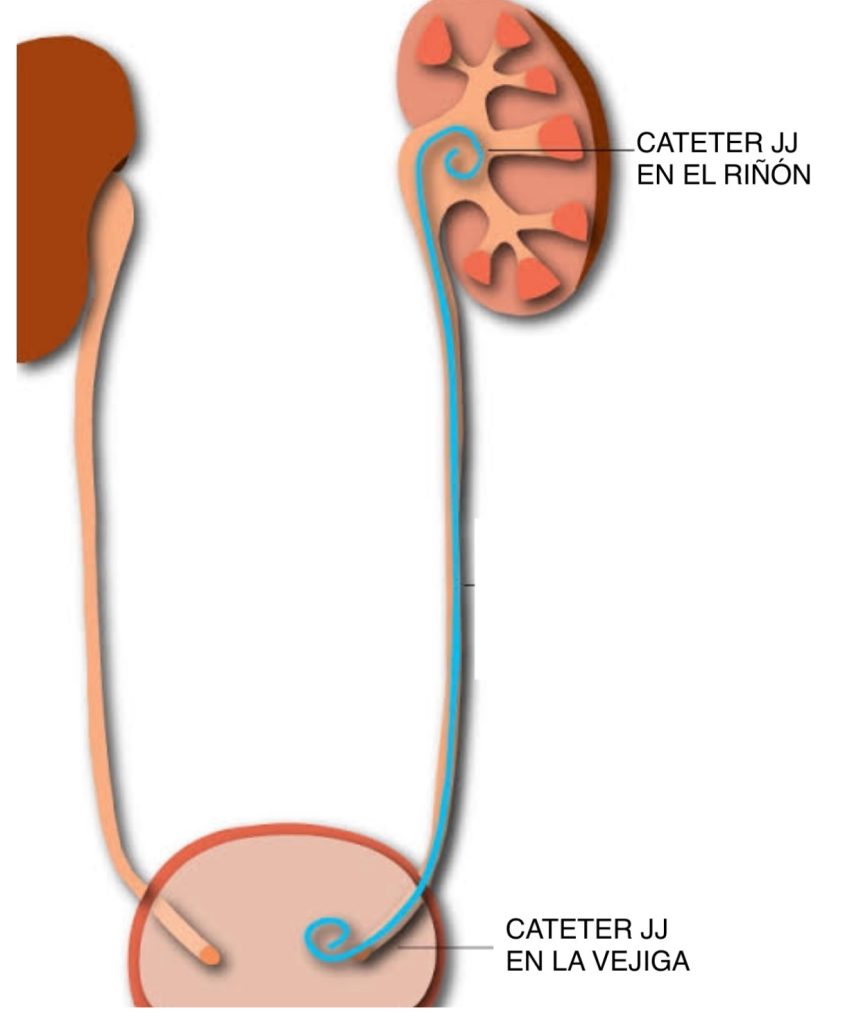
“A small sample will be taken to determine the exact composition of the calculus in an attempt to prevent future stone formations.
At the end of the surgery, the incision will be sutured with absorbable stitches (no suture removal will be required). This is done to reduce the risk of infection in both the kidney and the skin (Fig. 1.3). A JJ catheter (stent) will be placed to reduce inflammation in the urinary tract and facilitate its healing (Fig. 1.4).”
2. HOSPITA stay
“The patient will be transferred to the recovery area immediately after the surgery, where they will stay for approximately 2-4 hours. Subsequently, they will be moved to their room, where they will begin a soft diet and clear liquid intake. Additionally, they will remain at rest for 24 hours with the wound covered by a dressing.”
“The following morning, the patient will receive a visit where the wound, postoperative pain, and any discomfort while urinating will be assessed. Typically, patients who undergo surgery with us are discharged at this point with the following recommendations:”
- “Rest at home for 10 days.
- Rest from work-related activities for 21 days.
- Daily wound cleansing with soap and water.
- Drink 3 liters of water daily to flush the urinary tract and prevent bleeding.”
3. “FREQUENTLY ASKED QUESTIONS”
1. When will the JJ catheter be removed?
The JJ catheter is removed 7-10 days after surgery, and it is an outpatient procedure (the same day the catheter is removed, the patient goes home).
2. Is it normal to experience bleeding during urination?
Yes, this is completely normal. Patients often report it as being the color of watermelon, and it gradually clears up. In some patients, it may not resolve until the JJ catheter is removed.
3. Is it normal for fluid to come out of the wound?
Yes, it is normal. In some cases, it is due to a limited urinary output, while in others, it may be related to fatty tissue (fat) that is part of the healing process.
4. What discomfort can I expect from the JJ catheter?
The most common discomforts include abdominal pain on the side of the catheter, frequent trips to the bathroom, the sensation of incomplete emptying after urination, blood in the urine, and a burning sensation while urinating.
Please note: This text and recommendations are for patients undergoing laser surgery with us, as the recovery experience can be very different and may vary for other types of surgery.
Additionally, it’s advised to avoid irritants in your diet such as spicy foods, coffee, and heavily seasoned meals, as well as alcoholic beverages.


Other Endourology Procedures

